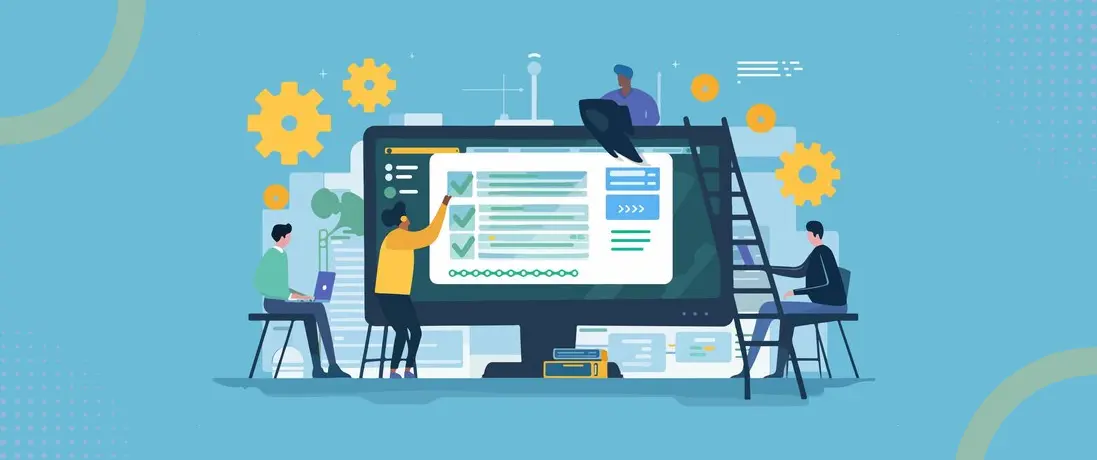The Ultimate Guide to Crafting Custom Software for the Digital Landscape of 2025
Introduction
As we approach 2025, the demand for customized software solutions has reached unprecedented heights, driven by rapid technological advancements and evolving business needs. In this digital landscape, off-the-shelf solutions often fall short in meeting unique operational challenges and customer expectations. Crafting custom software not only enables organizations to tailor their applications to specific requirements but also facilitates enhanced innovation, scalability, and competitive advantage.
This ultimate guide aims to equip you with essential insights and practical strategies for navigating the complexities of custom software development, ensuring your business thrives in the dynamic, tech-driven world of tomorrow. Whether you're a seasoned developer or a business leader looking to embrace digital transformation, this article will serve as your roadmap to successfully creating impactful software solutions.

What is Crafting Custom Software ?
Crafting custom software refers to the process of creating unique and tailored software solutions to meet a specific client's needs. This includes developing software from scratch or making modifications to existing programs to fulfill the client's requirements. Custom software is designed and built with the client's specific goals, processes, and systems in mind, rather than being a one-size-fits-all solution. It involves understanding the client's business, identifying their pain points and challenges, and crafting a personalized solution that can improve efficiency, productivity, and overall success. Crafting custom software requires technical expertise as well as a deep understanding of the client's industry and business operations.
Understanding the Digital Landscape of 2025
Before diving into the intricacies of software development, it's necessary to understand the digital landscape of 2025. This future scenario will be characterized by:
Artificial Intelligence and Machine Learning:
AI and ML will continue to integrate into various business processes, automating tasks, providing insights, and enhancing customer experiences.
Remote and Hybrid Work Environments:
The shift to remote work will persist, requiring software solutions that foster collaboration and productivity irrespective of location.
IoT Integration and Connectivity:
The Internet of Things will expand, with more devices connected to the internet, necessitating software that can seamlessly integrate and analyze data from various sources.
Cybersecurity Awareness:
As digital threats grow, the importance of robust security measures in software development will be paramount.
User Experience (UX) Focus:
Users expect intuitive interfaces and seamless experiences across devices, making UX design critical for custom software success.
Key Benefits of Crafting Custom Software Development
Crafting custom software development offers several key benefits that can greatly enhance a company's operations and success. Some of these include:

Tailored Solution:
Custom software is specifically designed to meet the unique needs and requirements of a business, making it a perfect fit for their operations.
Increased Efficiency:
Since the software is tailored to match the company's processes, it can greatly improve efficiency and productivity by streamlining tasks and automating processes.
Cost-Effective:
Though initially, custom software development may seem expensive, in the long run, it proves to be cost-effective as it eliminates the need for multiple off-the-shelf software and reduces manual labor costs.
Scalability:
Custom software can easily adapt to changes in the business environment and growth of the company, making it a highly scalable solution.
Competitive Advantage:
With a unique and efficient software system in place, businesses gain a competitive edge over their competitors as they are able to provide better services and operate more efficiently.
Better Support:
Companies can receive continuous support from developers during and after the development process, ensuring any issues are resolved quickly.
Enhanced Security:
Custom-built software can have advanced security measures in place, reducing vulnerability to cyber threats compared to off-the-shelf solutions.
10 Steps to Craft Custom Software

Identify Business Needs and Goals:
Before diving into development, clearly outline the goals of your software. Engage with stakeholders to gather insights on pain points and desired features. This foundational step will direct all subsequent development decisions.
Conduct Comprehensive Market Research:
Understanding your competitors and market trends is crucial. Analyze existing solutions, identify gaps in the market, and pinpoint opportunities where your custom software can provide unique value.
Choosing the Right Tech Stack:
Selecting the appropriate technology stack is pivotal. Consider the following factors:
- Scalability: Will the software be able to grow with your business?
- Integration: How easily can it connect with other tools and platforms your organization uses?
- Security: Does the tech stack offer robust security features to protect sensitive data?
Designing User-Centric Interfaces:
Invest in UX/UI design to ensure that your software is not only functional but also user-friendly. Conduct user testing to gather feedback during the design phase, iterating on design based on real user experiences.
Agile Development Methodology:
Adopt an Agile approach to software development, which promotes collaboration, flexibility, and rapid delivery. Break down the project into manageable sprints, allowing for periodic reassessment and adaptation based on feedback.
Implementing Artificial Intelligence and Automation:
To ensure your software remains competitive in 2025, integrate AI and automation where applicable. This could involve leveraging machine learning algorithms for data analysis, implementing chatbots for customer service, or automating routine tasks to improve efficiency.
Focus on Security and Compliance:
Data privacy will be more critical than ever in 2025. Implement strong security protocols from the beginning, including data encryption, user authentication features, and regular security audits. Ensure that your software complies with relevant regulations, such as GDPR or CCPA.
Continuous Testing and Quality Assurance:
Incorporate continuous testing throughout the development lifecycle to catch and resolve issues early. Use automated testing tools to streamline the process, ensuring your software is both reliable and high-quality before launch.
Launch and Gather Feedback:
Once the software is ready, launch it in phases. A soft launch with select users can help pinpoint any unforeseen issues before a full-scale rollout. Collect feedback vigorously and be prepared to make adjustments based on user experiences.
Plan for Future Updates:
The digital landscape is ever-changing, and your software should be too. Plan for ongoing maintenance and updates to adapt to user needs and technological advancements over time. Regularly engage users for feedback to identify areas for improvement.
Also Read: Mobile application development- what's the difference between iOS and Android?
Conclusion
Crafting custom software is a strategic necessity in today’s evolving digital landscape, offering the flexibility and innovation needed to stay competitive. By focusing on your unique needs, embracing cutting-edge technologies, and following the outlined steps, you can build a solution that drives efficiency, adaptability, and sustained growth. Stay flexible, prioritize user feedback, and be ready to adapt as technology advances, ensuring your software evolves alongside your business. With a tailored approach, you'll not only meet the demands of 2025 but also set the foundation for long-term success in an ever-changing digital world.
Transform your business with custom software. Start now!
Recent Blogs:

How can AI revolutionize the Game Industry?
Discover the different ways of AI that can revolutionize the game industry and create superi...
Read More
Sports Betting App Like Ladbrokes – Cost Brea...
Discover the estimated cost to build a sports betting app like Ladbrokes with key features a...
Read More
Top 8 Advantages of On-Demand Apps | Build an...
On-demand apps- Looking to take your business to next level? checkout these top 8 advantage ...
Read More